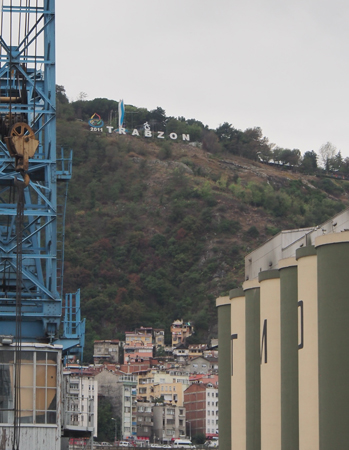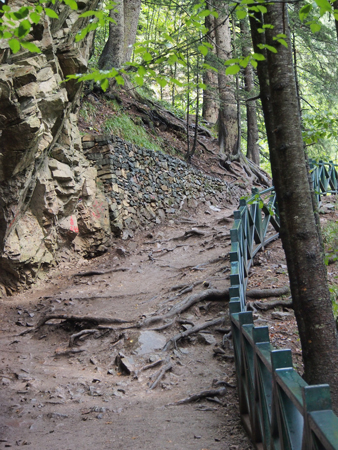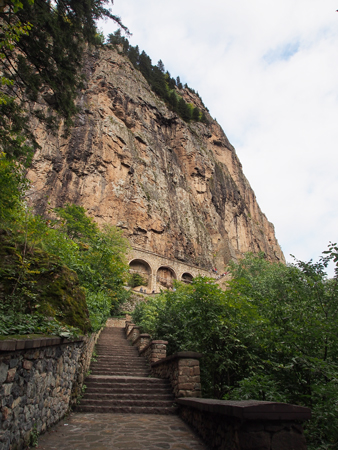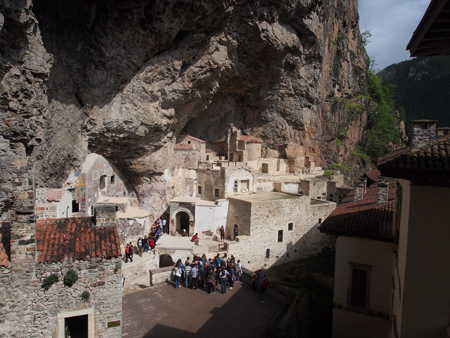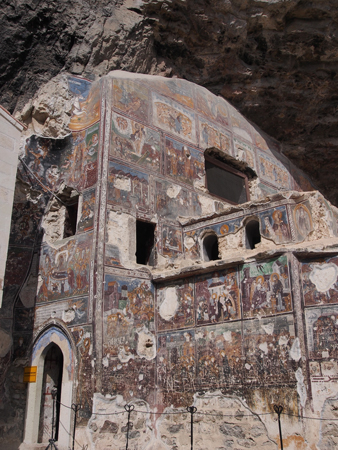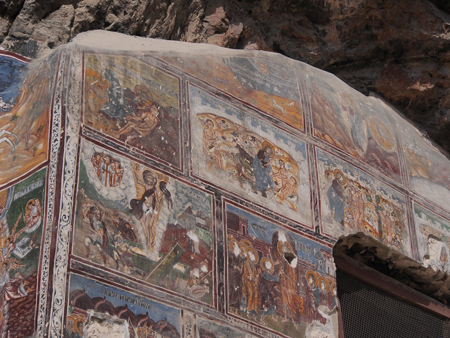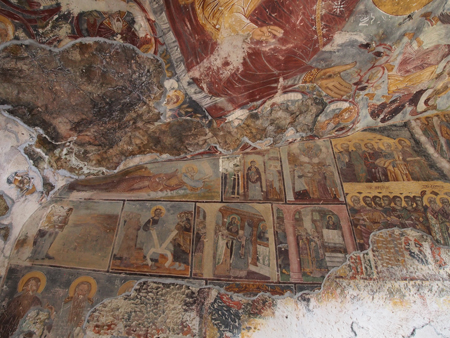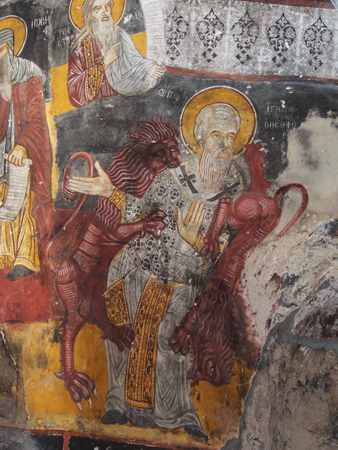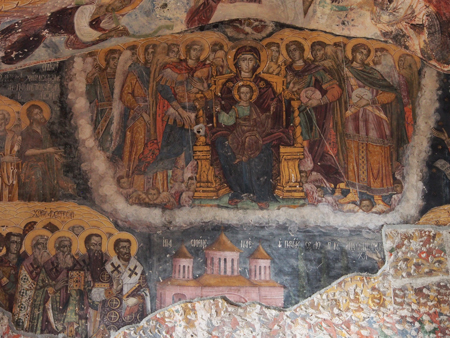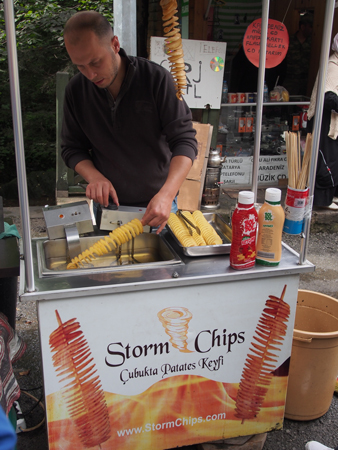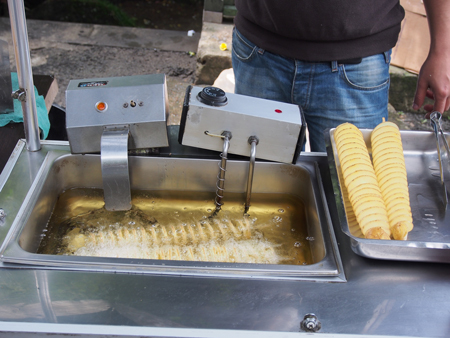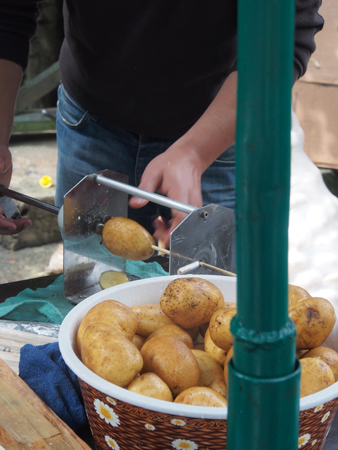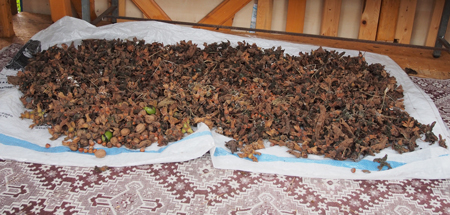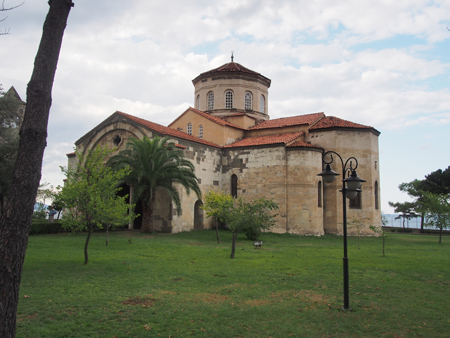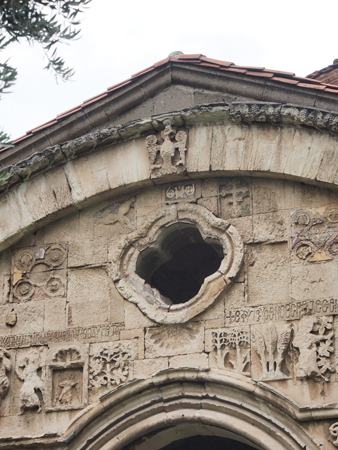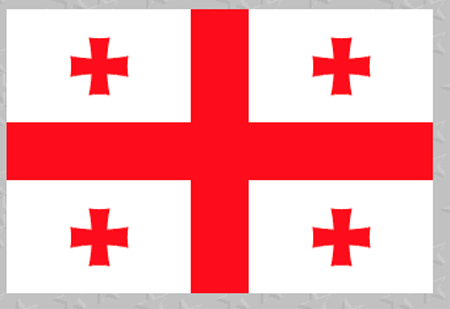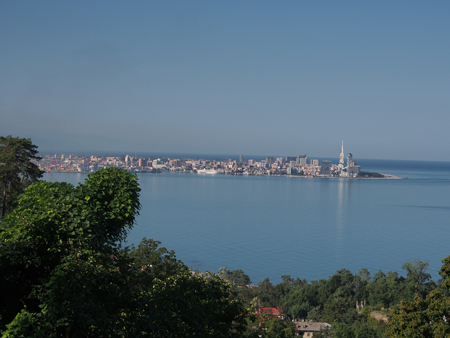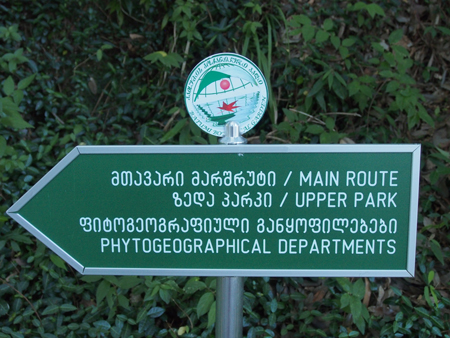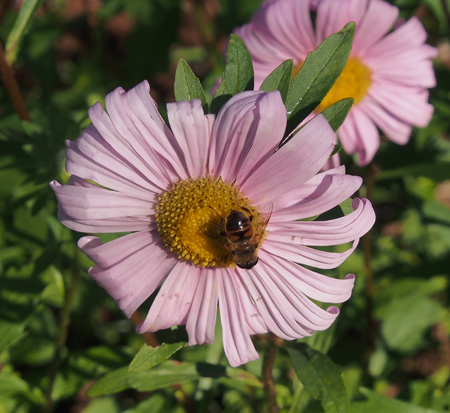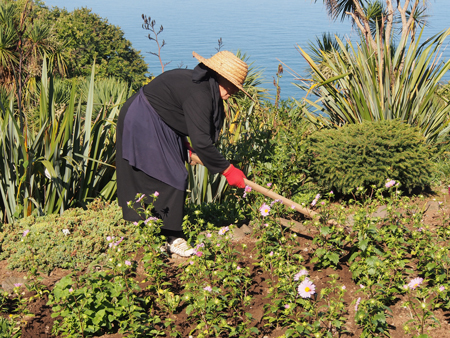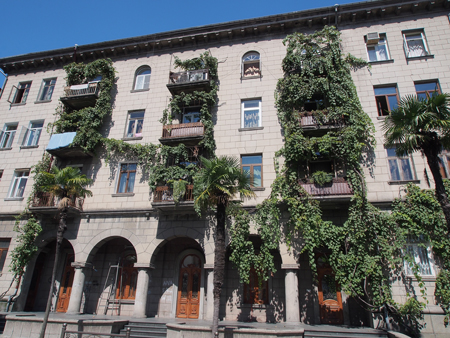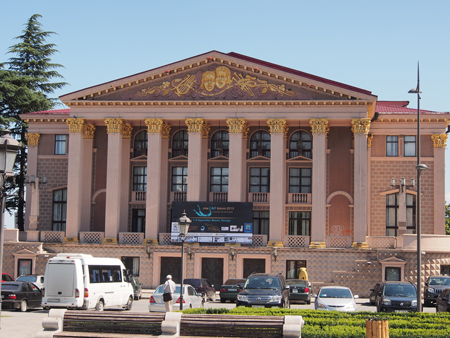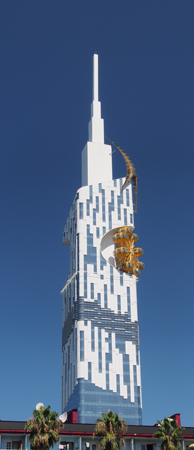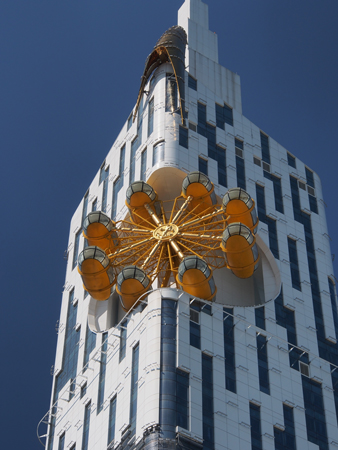Monday, 9/2/13 – A Day at Sea
Today was a day at sea but not a day of leisure. We ate breakfast at the Terrace buffet and then attended a 1 ½ hour private lecture by Eleni about our Road Scholar tour and the history of what we will be seeing. At 11:15 we listened to British historian, Dr. Oswyn Murray, lecture on Romans and Byzantines in the Black Sea region. After a buffet lunch, Gale went to another lecture, this time by Carleton College professor David Tompkins, on The Black Sea as a Red Sea – Communism and Its Legacy.Tues., 9/3/13 – Trabzon, Turkey on the southeast shore of the Black Sea
Trabzon is in Turkey on the south shore of the Black Sea. It was settled as a trading port around 700 BCE. The Silk Road came through the “Pontic” Alps and then merchandise could be shipped through the Black Sea, the Bosporus, the Sea of Marmara, and the Dardanelles to the Mediterranean.
This area is famous for growing hazelnuts and also has tea farms. The hills and mountains get plenty of rain and are heavily forested.
The Byzantine government built the elaborate monastery, Sumela, on the side of the mountain around a cave where, in the 4th c. CE, two Greek monks had a vision and saw a flame and an icon of Mother Mary. It became a place of pilgrimage. In 1923 it was abandoned and in 1930 the monastery was burned and not cared for until 1972 when it was reopened as a museum. As a result, some of the elaborate frescos have been defaced or ruined.
Large buses took us into Altindere Valley National Park (one of 40 in Turkey) where we transferred to shuttle vans that drove us farther up the steep, twisty, narrow road, and then we walked a half mile over mud and roots, steps, and stones to the monastery on the cliff face. Some of the cells, dining area, library, holy well, etc. remain.
Trabzon, Turkey
|
Sumela Monastery - perched on the hillside |
Interesting trail up to the monastery |
|
Entrance
|
Sumela Monastery buildings |
The Rock Chapel is the main attraction. It has frescoes both inside on the cave walls and outside. These are in marvelous condition considering they have been exposed to the elements for hundreds of years. |
Outside frescoes
|
Outside frescoes
|
Interior frescoes |
Interior frescoes
|
Interior frescoes |
Interesting shaped snack produced from potatoes.
|
|
|
|
Our next stop was for a Turkish lunch down along the sea in Trabzon. Then we were taken up to a mountain village where the locals grow hazelnuts for export. Hazelnuts were harvested last month but as we walked around a family farm we saw some unpicked nuts. They are picked and opened by hand. This farm also grew corn, eggplant, beans, tomatoes, peppers, etc. to feed themselves all year. Our young female bus driver (a rarity in Turkey) climbed a fig tree and tossed down ripe figs for us to eat. I really love them and ate several. Corn was drying to make corn meal, beans were dried to store and, of course, hazelnuts were also drying.
|
Drying hazelnuts |
Our bus driver tossing ripe figs to the group
|
Back in town we visited another 13th c. Byzantine Church, also called Hagia Sofia or Church of Wisdom. It is now undergoing renovation into a mosque. To cover the Christian ceiling frescoes they dropped the ceiling to save the original paintings. Some side sections still have frescoes.
|
|
Trabzon's Hagia Sophia
|
Trabzon's Hagia Sophia
|
|
Wed., 9/4/13 – Batumi, Georgia
We spent today (at least until 1pm) in the city of Batumi, Georgia. Batumi is located in the Southern Caucasus, on the eastern side of the Black Sea. It has a 5th c. CE castle and has been ruled by the Byzantines, Ottomans, and Russia. Batumi is now an autonomous region (of Adjara) of the Republic of Georgia as a result of a treaty, which is due to lapse in 2015. The city is a unique mix of Moslem, Greek Orthodox, and Russian Orthodox. It is a major holiday destination (especially for Russians) with temperate climate and beautiful coastline. School is taught in the Georgian language, which has a unique 36 character alphabet, but in Batumi, English is taught beginning in second grade and Russian in fifth or seventh grade. The city has many new, interesting buildings and is supported by the oil industry. A pipeline from Azerbaijan delivers oil to the shipping terminals here and is then shipped to western countries.
Our tour this morning took us to the Batumi Botanical Gardens. The subtropical climate here allows 5,000 species of trees, shrubs, and flowers from all around the world to flourish here. The 72 acres are the second largest garden in the world (the Kew in London is the largest) and is divided into nine zones. We walked the 2 ½ km path downhill as our guide pointed out trees like Mandarin oranges (grown for export), Eucalyptus (imported to soak up water in coastal bogs and the oil in the leaves wards off mosquitoes), five Giant Sequoias, many kinds of bamboo (one of which grows one meter a day, grows 12 meters high, and then becomes wooden; it blooms once in 100 years and then the whole forest of them dies; shoots rise again and the life cycle repeats), date palms, and on and on – there were even a few maples.
Flag of the Republic of Georgia
|
|
City of Batumi from the Botanical Gardens
|
Sign in Georgian and English |
A busy bee
|
Woman in traditional dress working in the gardens |
Back in Batumi we had a very brief city walk. The clock tower of the old governor’s palace is an astronomical and lunar timepiece. The unique tower with a gold Ferris wheel near the top! will house the American/Georgian University of Technology when it is finished. Another unique tower is a water tower with the Georgian alphabet letters spiraling around it.
|
Street scene |
Typical building |
Astronomical clock
|
Theater |
Technical University Tower with ferris wheel
|
Technical University Tower with ferris wheel
|
Georgian Alphabet Tower |
Our tour in Georgia was cut short because Russia denied our ship entry to Sochi, just up the coast, tomorrow because of “construction for the Winter Olympic Games” in 2014. So we have to sail all the way to Feodosiya, Ukraine this afternoon, tonight, and tomorrow morning. It is a shame because Batumi is quite interesting, has many sights, and we did not get to have lunch in town to sample the delicious food Eleni has told us about. However, while we were walking in the park, Eleni bought us each a traditional cheese pie and gave them to us as we returned to the ship. We ate them at lunch and they were unique and delicious, just as she said.
| Return to Top | Return to Itinerary | Return to Trips page to view other trips | Return to Dreamcatcher Home Page |
